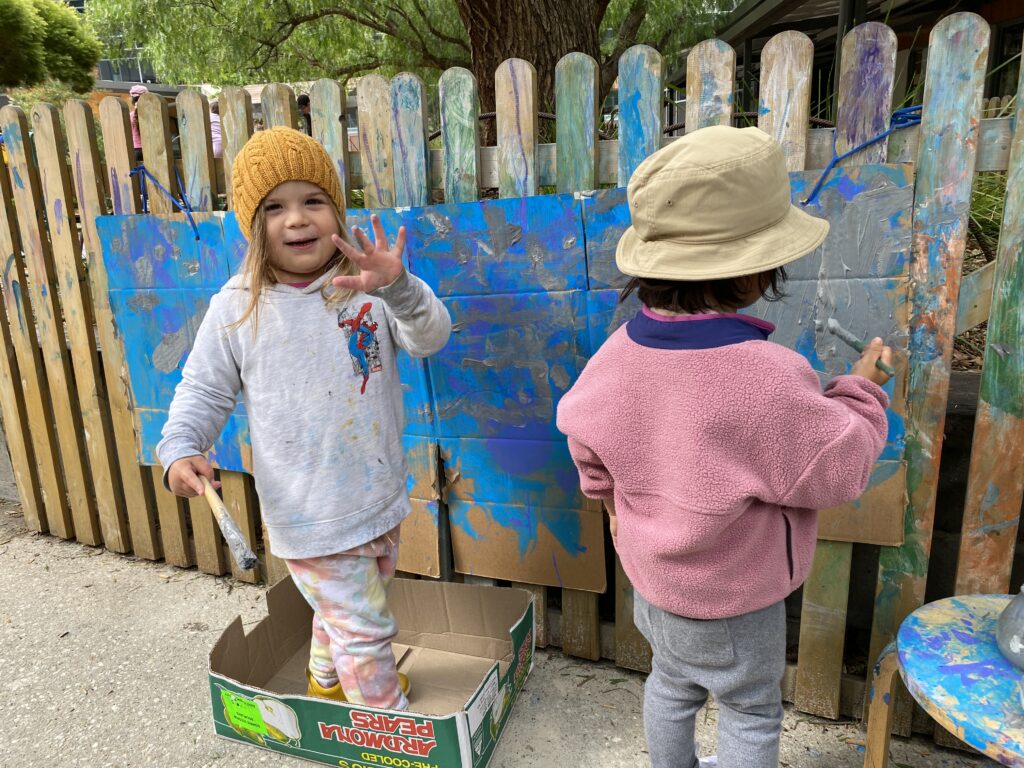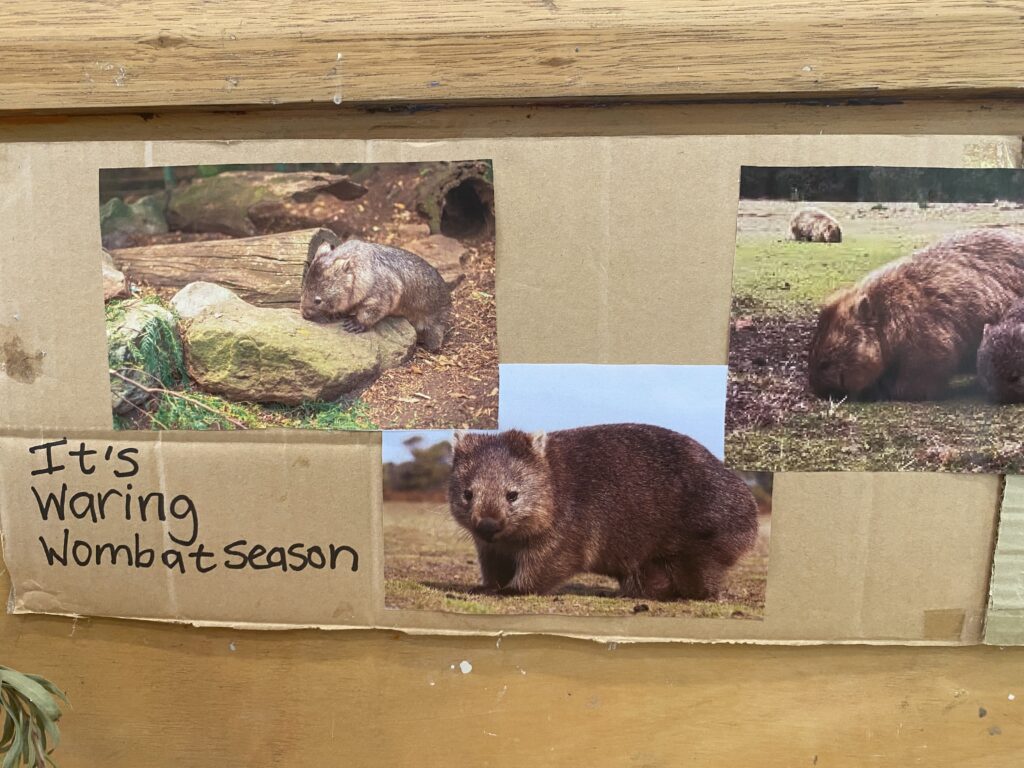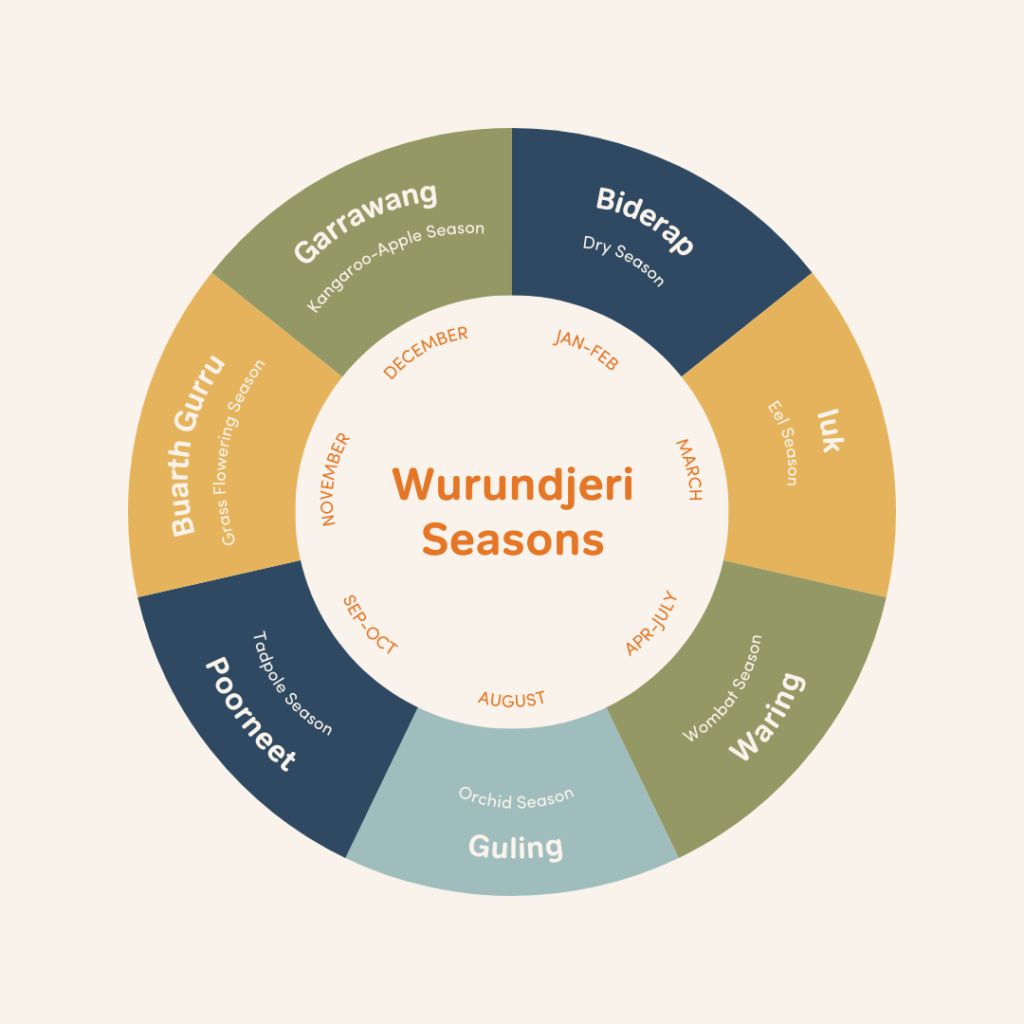April marked the start of the Waring Wombat Season on the Kulin nation calendar.
As the weather cools, waring (wombats) emerge from their burrows to bask in the sunshine, while bulen-bulen (superb lyrebirds) dazzle with their courtship dances. It is a wonderful time of year as it coincides with the changing colours of autumn.
In March, children in the Barrawarn (Magpie) Room, Gowrie at The Harbour, learned all about Iuk Season, which is the Aboriginal word for ‘eel’. “The children watched a video on eels and how they lay eggs and migrate out to sea,” says Room Leader, Cerri. “We looked at how the eels move, and we even made up a little song about them and migrating to the sea.” The children enjoyed painting eels on some cardboard in the yard, with some even getting their hands a little messy. Now, we have entered Waring Wombat Season, and the children are again exploring the seasons through play. The educators have thoughtfully and deliberately provided resources to support the children’s engagement and facilitate learning experiences such as habitat making with clay and natural resources, using ICT and books to learn about wombats, dramatic play with puppets, and more.


Within our programs at Gowrie, First Nations perspectives are embedded in our pedagogy with educators intentionally using local Language in daily Acknowledgement of Country and throughout their teaching and learning with children. “Reconciliation starts here,” says Educational Leader, Philippa. “We understand the weight of our role in connecting with First Nations people to listen, learn, and share the knowledge that is imparted on us with children,” she says.
By incorporating First Nations perspectives into our programs, the children can learn about and reflect on our shared histories, fostering a community of togetherness. Philippa says that children are naturally curious and enjoy exploring, wondering, and discovering the natural world. “First Nations perspectives can be linked to all areas of play and learning, from storytelling, to song, movement, building cubbies, drawing and mark making, and imaginative play,” she says.
According to the Kulin People, there are seven seasons, each reflecting the movements of the stars and a change in the weather, which align with the life cycle of plants and animals. The seven different seasons are described as:

- Biderap Dry Season (Jan-Feb)
- Iuk Eel Season (March)
- Waring Wombat Season (April-July)
- Guling Orchid Season (Aug)
- Poorneet Tadpole Season (Sept-Oct)
- Buarth Gurru Grass Flowering Season (Nov)
- Garrawang Kangaroo-Apple Season (Dec)
You can learn more about the Wurundjeri seasons at Inspiring Victoria and Museums Victoria.